Designing with Style: 16 Proven Ideas for Small Living Room Decor
A small living room doesn’t mean you have to compromise on style or functionality. With thoughtful choices, you can create a space that feels open, cozy, and perfectly suited to your needs. Whether you live in an apartment, a townhouse, or a home with a compact living area, these 16 unique small living room decor ideas will help you make the most of your space. Each idea comes with actionable tips to make it easy to implement.
1. Choose a Statement Sofa
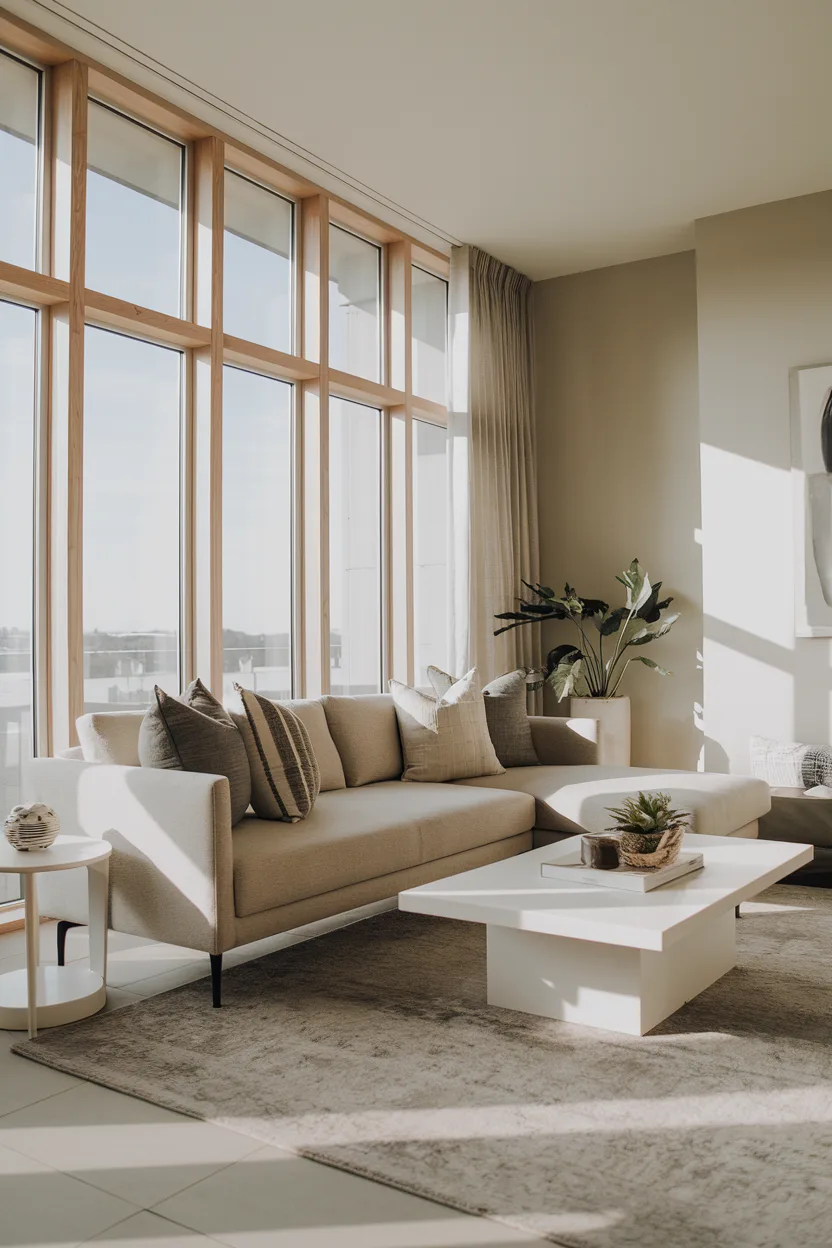
Instead of a bulky sectional, pick a compact sofa that serves as the focal point of your living room. Opt for a bold color or unique design to draw attention while keeping the rest of the room minimal.
Tips:
- Look for sofas with clean lines and legs that elevate them off the floor to create a sense of openness.
- Pair it with a neutral backdrop to let the sofa shine.
2. Opt for a Foldable Coffee Table
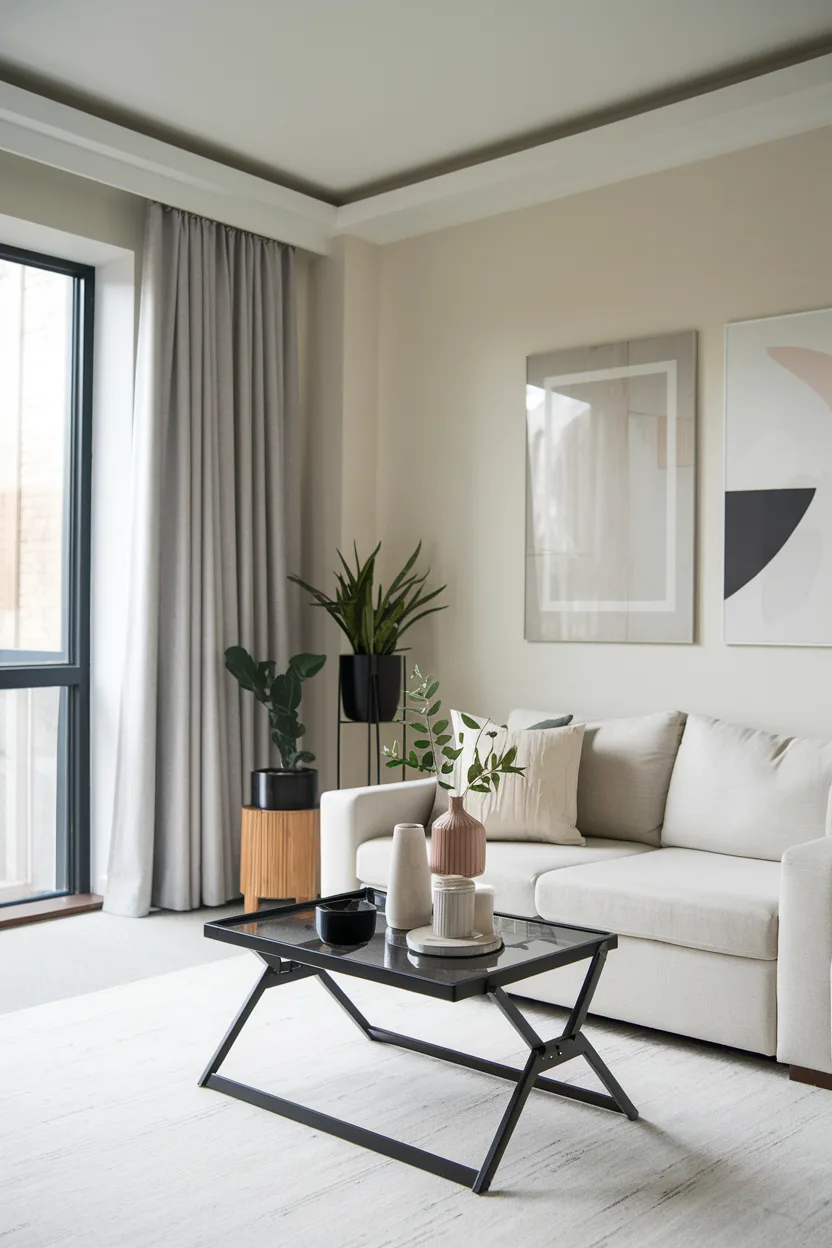
A foldable coffee table gives you the flexibility to adjust your space as needed. You can fold it out for game nights or tuck it away when you need more floor space.
Tips:
- Choose a design that doubles as a console table when folded.
- Consider lightweight materials like metal or acrylic for easy mobility.
3. Use Wall-Mounted Lighting
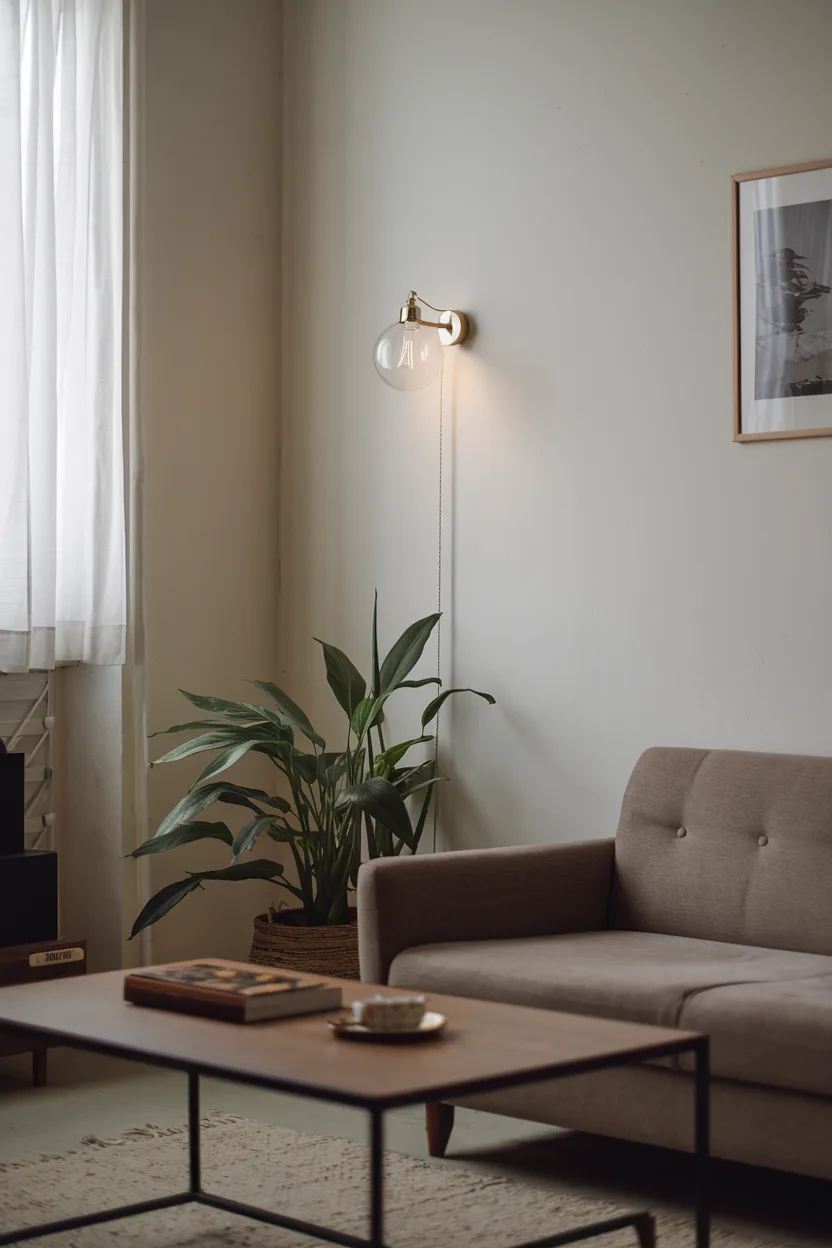
Floor lamps can take up valuable space. Instead, install wall-mounted sconces or swing-arm lamps to keep your floors clear while adding stylish and functional lighting.
Tips:
- Position lights near seating areas for optimal reading or task lighting.
- Choose adjustable sconces for versatility.
4. Go Vertical with Shelving
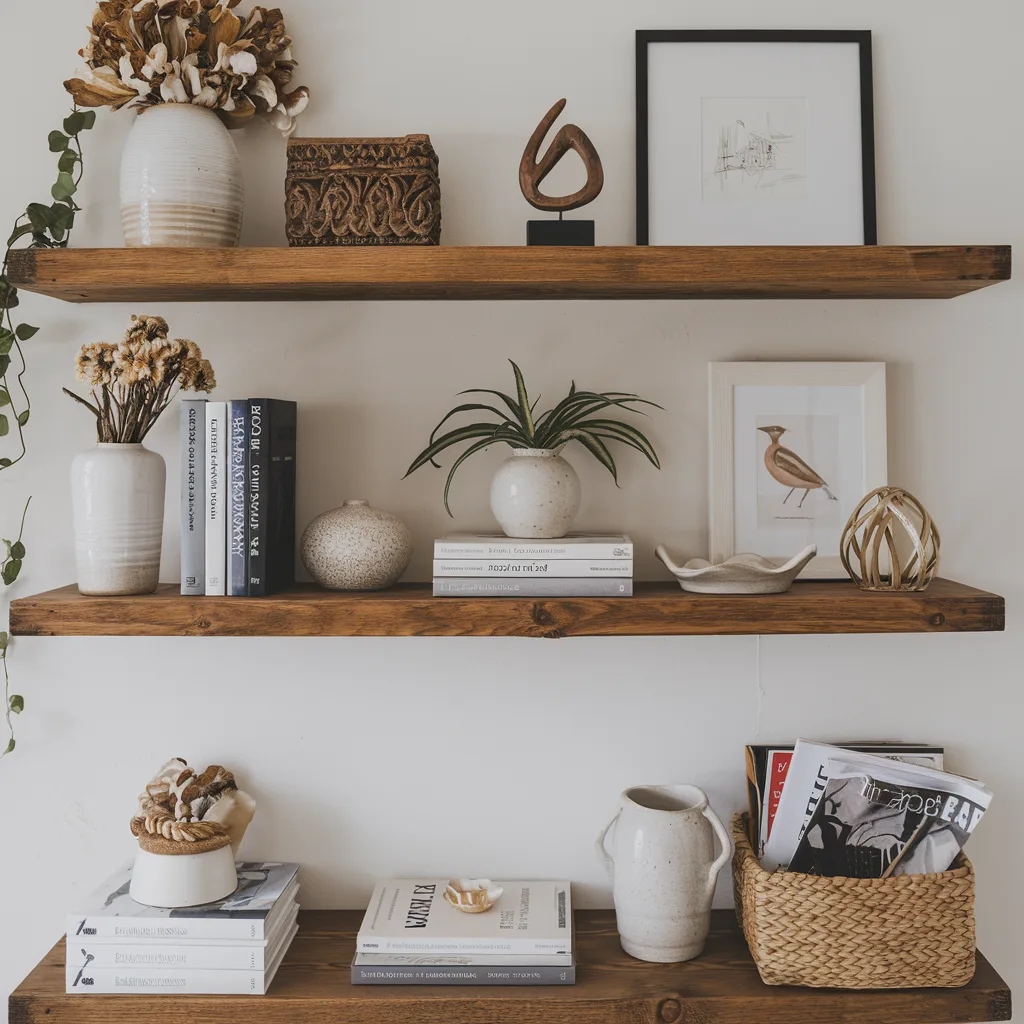
Maximize your wall space by installing shelves that reach up to the ceiling. Use them to display books, plants, and decor items while keeping your floor clear.
Tips:
- Arrange items in groups of three for a balanced look.
- Use a mix of closed storage and open shelves to hide clutter.
5. Incorporate Mirrors Strategically
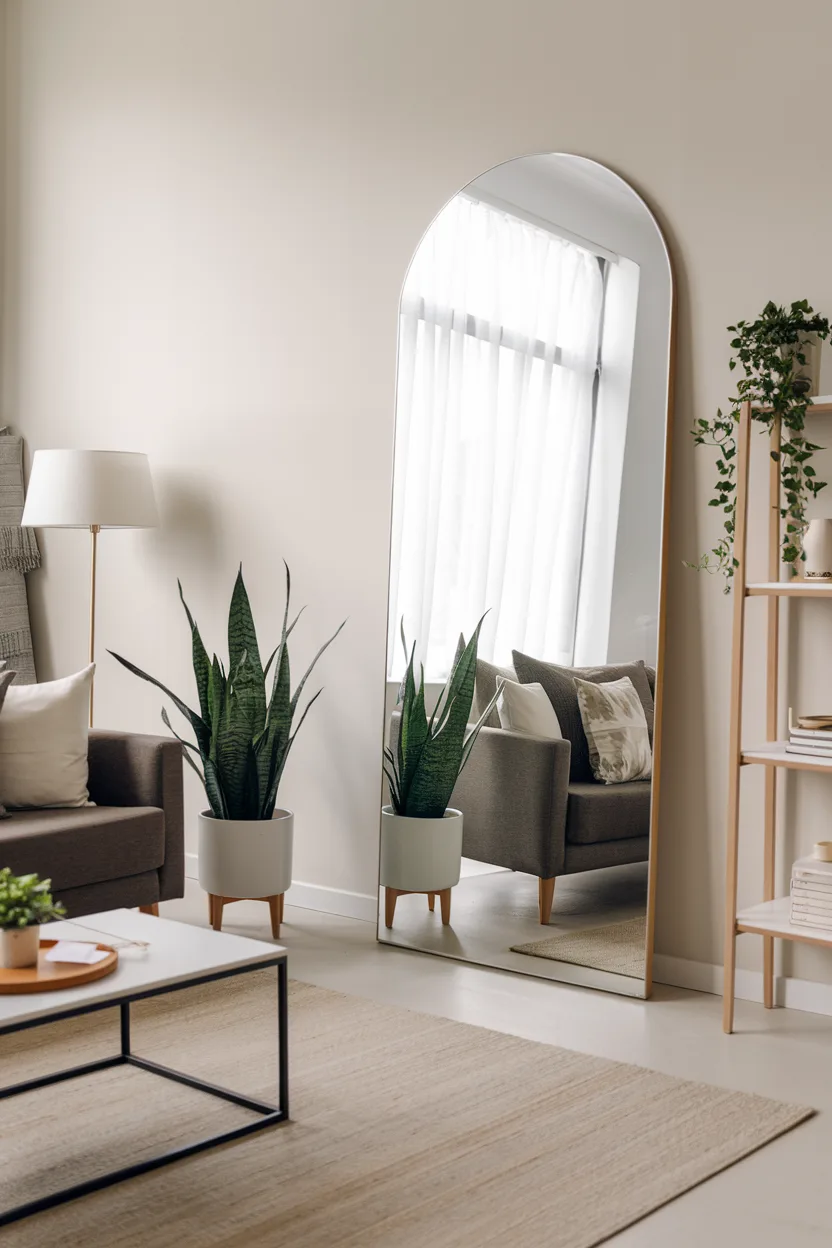
Mirrors are a classic trick to make any space feel larger. Instead of placing a single large mirror, create a gallery wall with smaller mirrors in interesting shapes.
Tips:
- Position mirrors opposite windows to reflect natural light.
- Use frames that match your room’s color scheme for a cohesive look.
6. Invest in a Compact Accent Chair
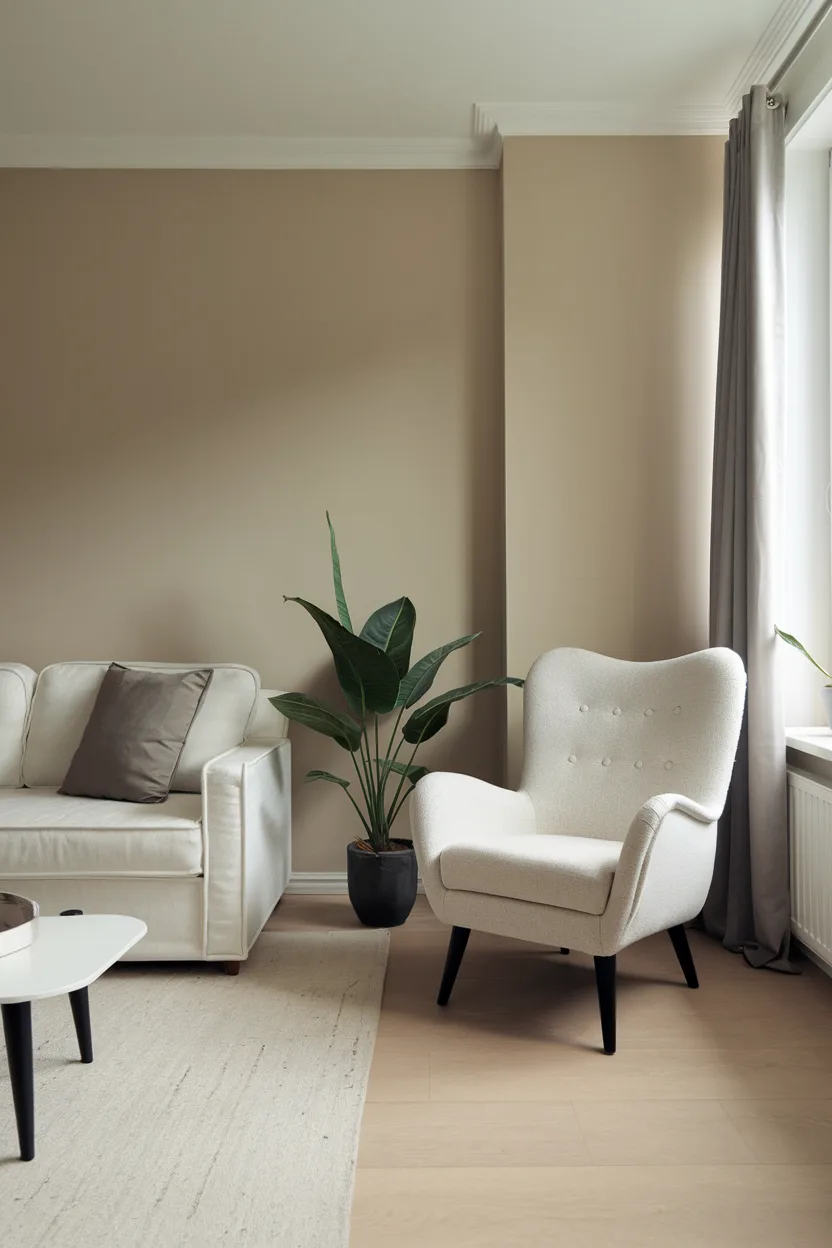
Choose a single bold accent chair to break up a neutral color scheme. Compact chairs with sleek arms or armless designs fit well in tight spaces.
Tips:
- Place the chair at an angle in a corner to create a cozy reading nook.
- Add a small side table and a floor lamp to complete the setup.
7. Add Floating Cabinets
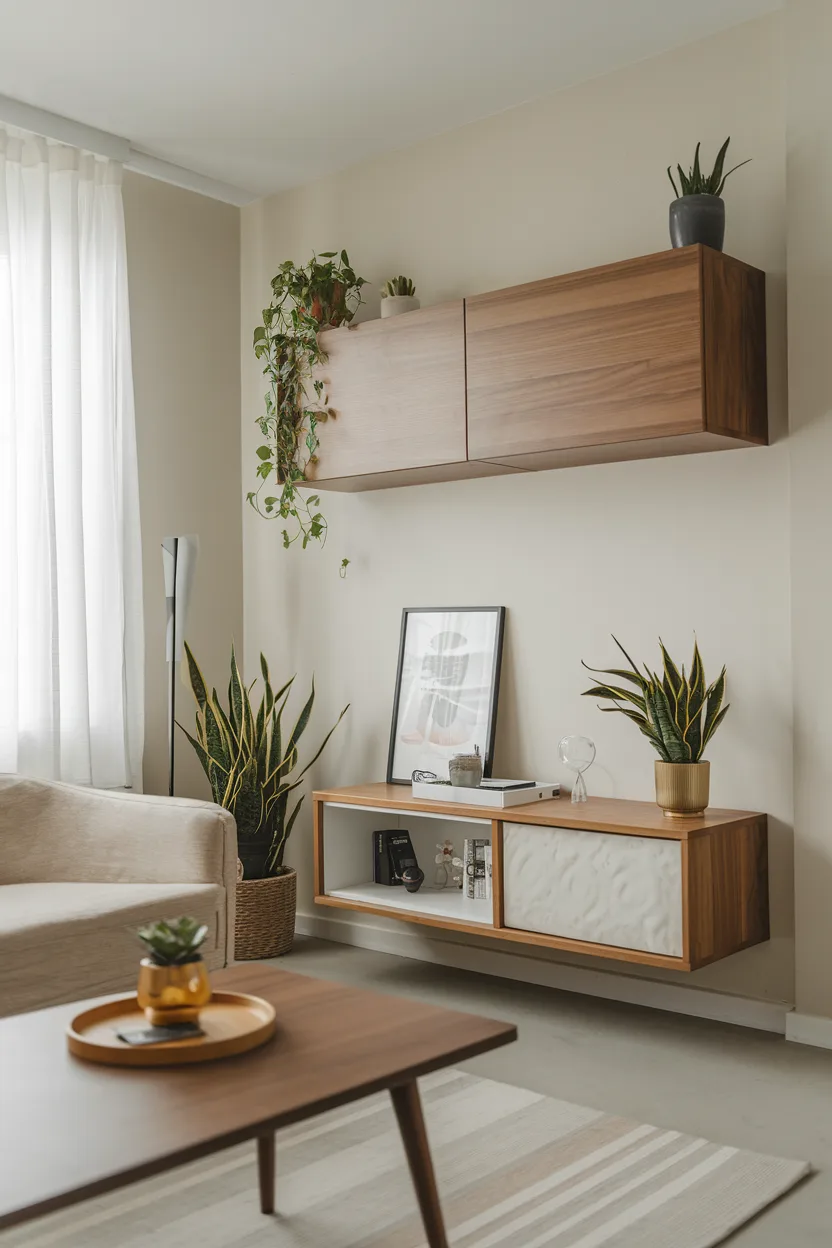
Install floating cabinets or a console table that spans the length of one wall. This provides ample storage without making the room feel crowded.
Tips:
- Choose cabinets in the same color as your walls to blend them seamlessly.
- Use the top surface for decorative items like framed photos or vases.
8. Choose Light Curtains or Go Curtain-Free
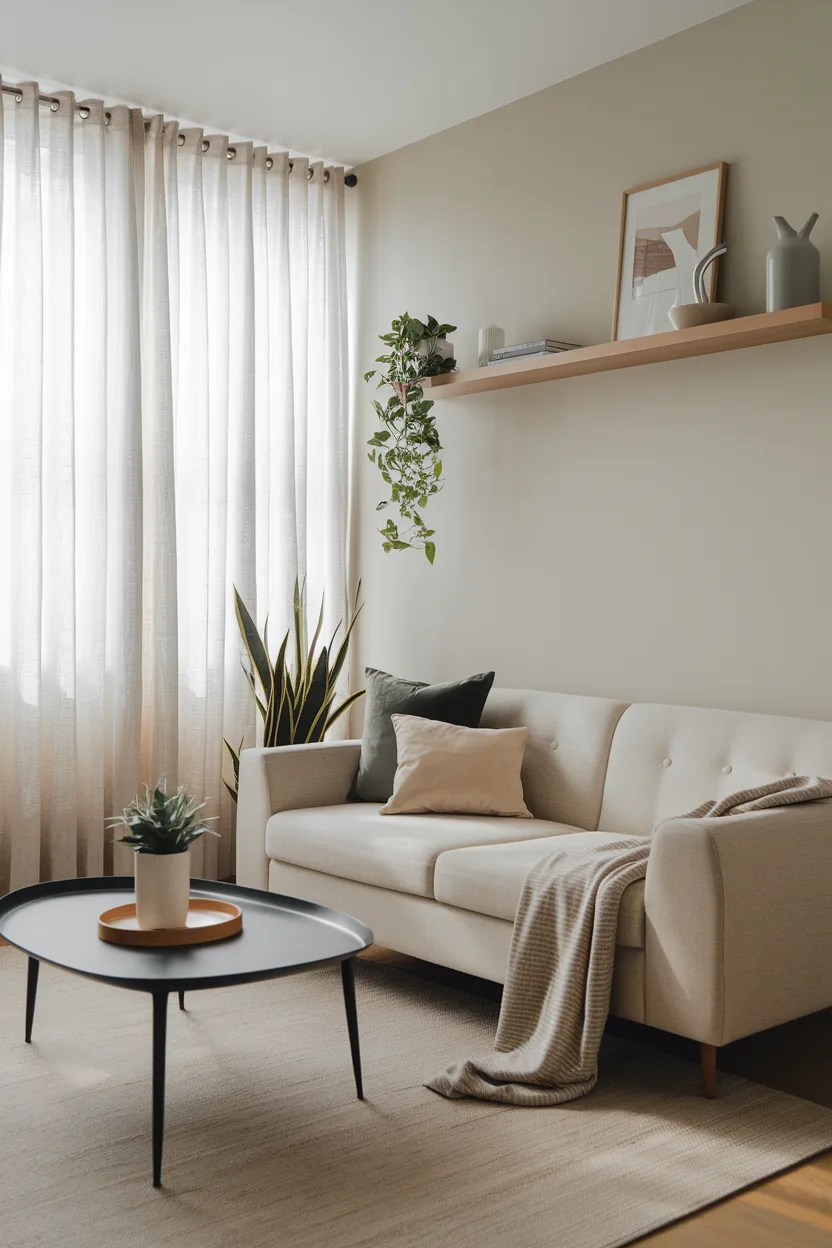
Heavy drapes can make a small living room feel closed in. Opt for sheer curtains or blinds that let in natural light. If privacy isn’t an issue, go curtain-free for a clean, open look.
Tips:
- Use curtain rods that extend beyond the window frame to make windows appear larger.
- Match curtain colors to your walls for a cohesive design.
9. Use Acrylic or Glass Furniture
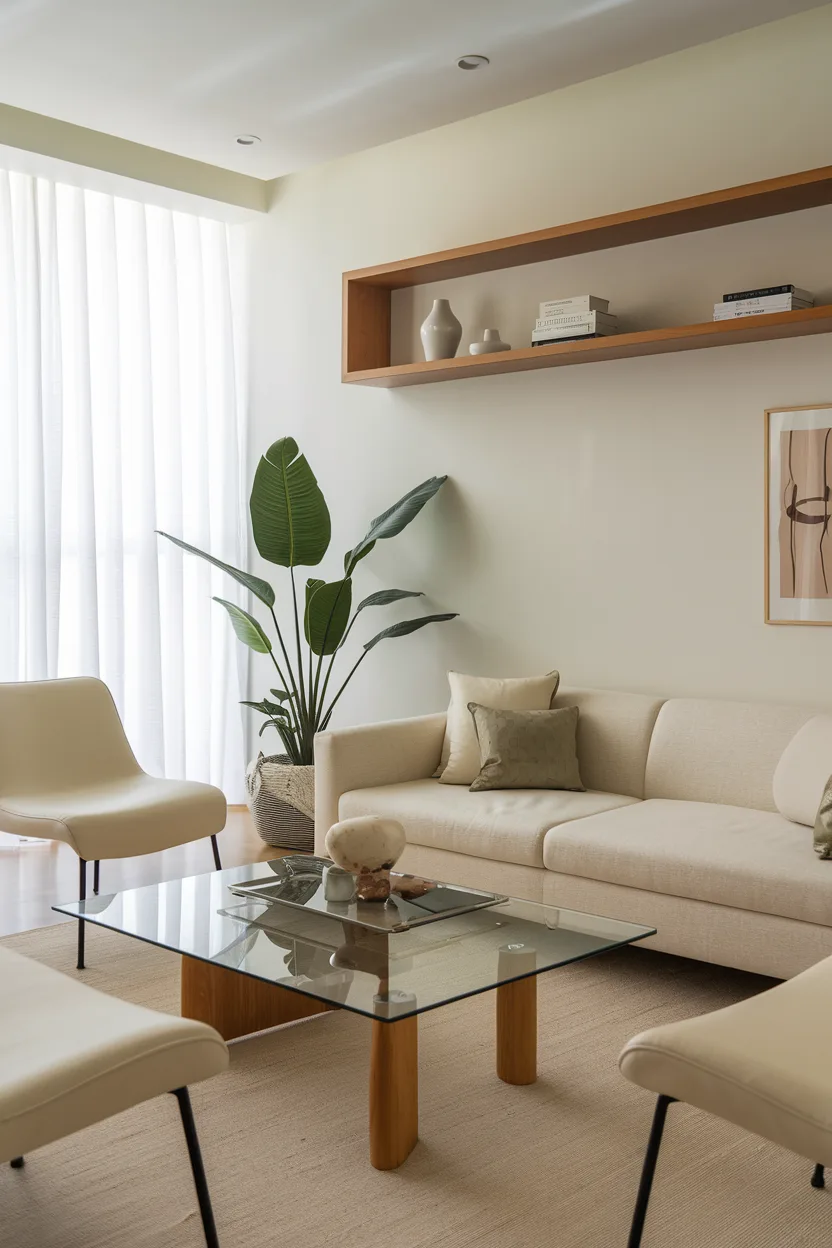
Clear furniture creates the illusion of more space. Consider an acrylic coffee table or glass side tables to keep the room feeling open and modern.
Tips:
- Pair clear furniture with bold decor items to add contrast.
- Clean glass surfaces regularly to maintain their sleek appearance.
10. Incorporate Sliding or Pocket Doors
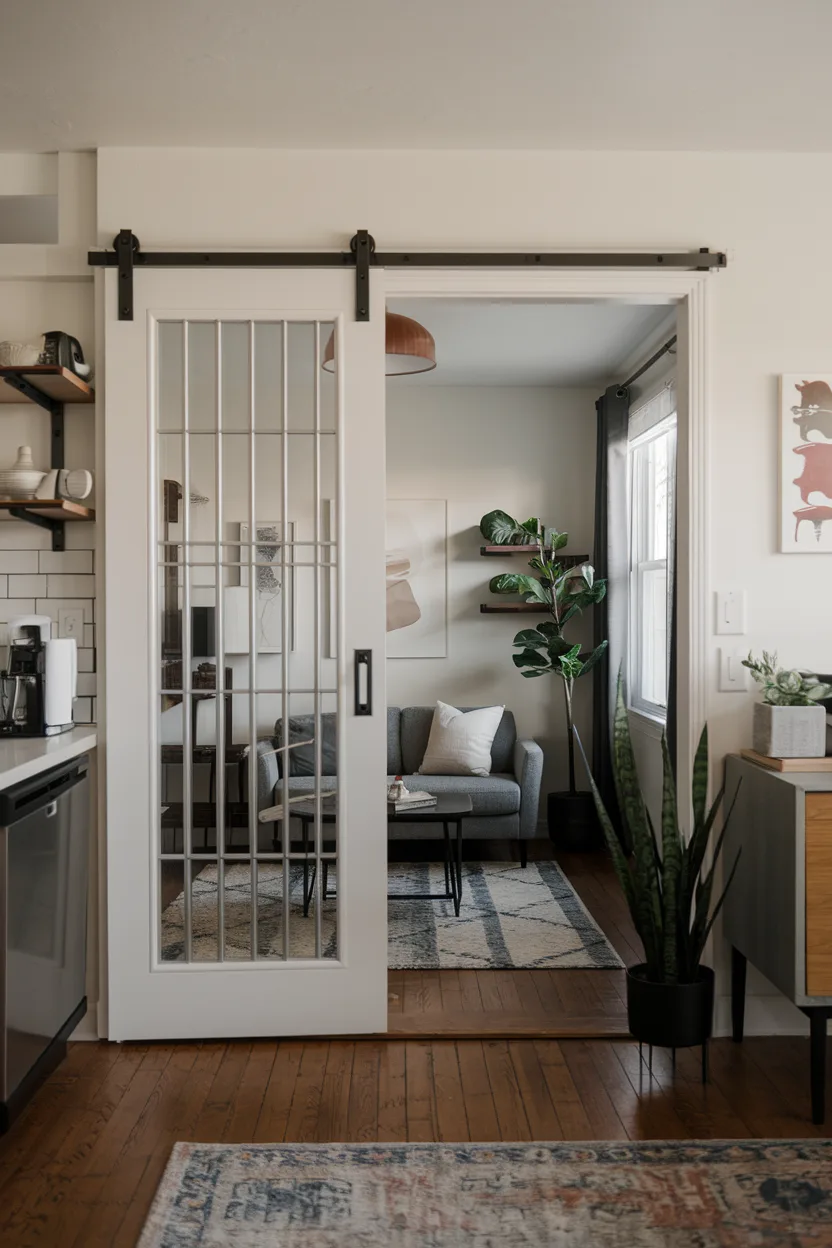
If your small living room connects to another space, replace swinging doors with sliding or pocket doors. These save room and create a more seamless transition between spaces.
Tips:
- Choose frosted glass for privacy while still allowing light to pass through.
- Opt for minimalist handles to keep the look clean.
11. Create a Built-In Look with Floating Shelves
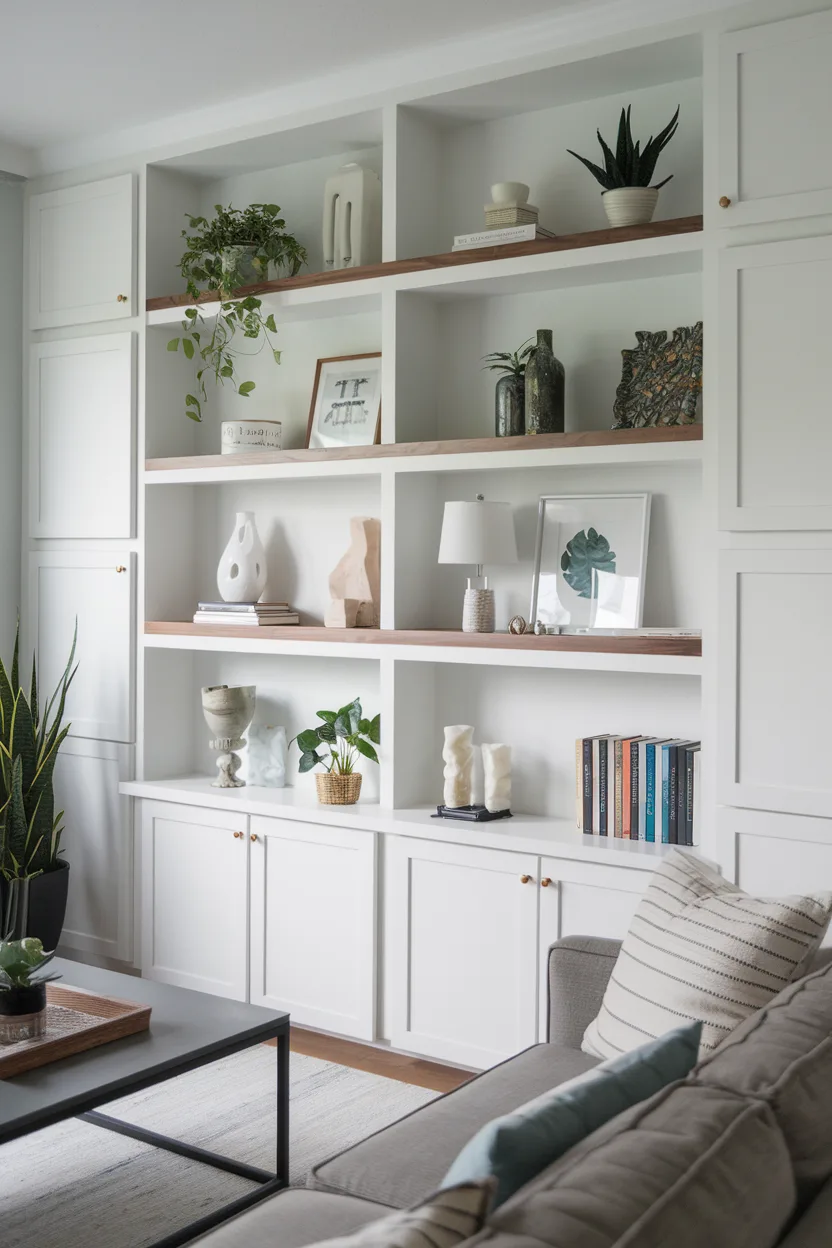
Install floating shelves in a pattern that mimics built-in cabinetry. This adds storage without taking up floor space and gives your living room a polished look.
Tips:
- Mix decorative and functional items to avoid a cluttered appearance.
- Use baskets or bins on lower shelves for hidden storage.
12. Design a Gallery Wall with Small Art Pieces

Instead of oversized artwork, create a gallery wall with smaller frames. Arrange them in a grid or an eclectic pattern to add personality without overwhelming the walls.
Tips:
- Use frames of the same color for a cohesive design.
- Include a mix of photos, prints, and small mirrors for variety.
13. Maximize Corner Spaces
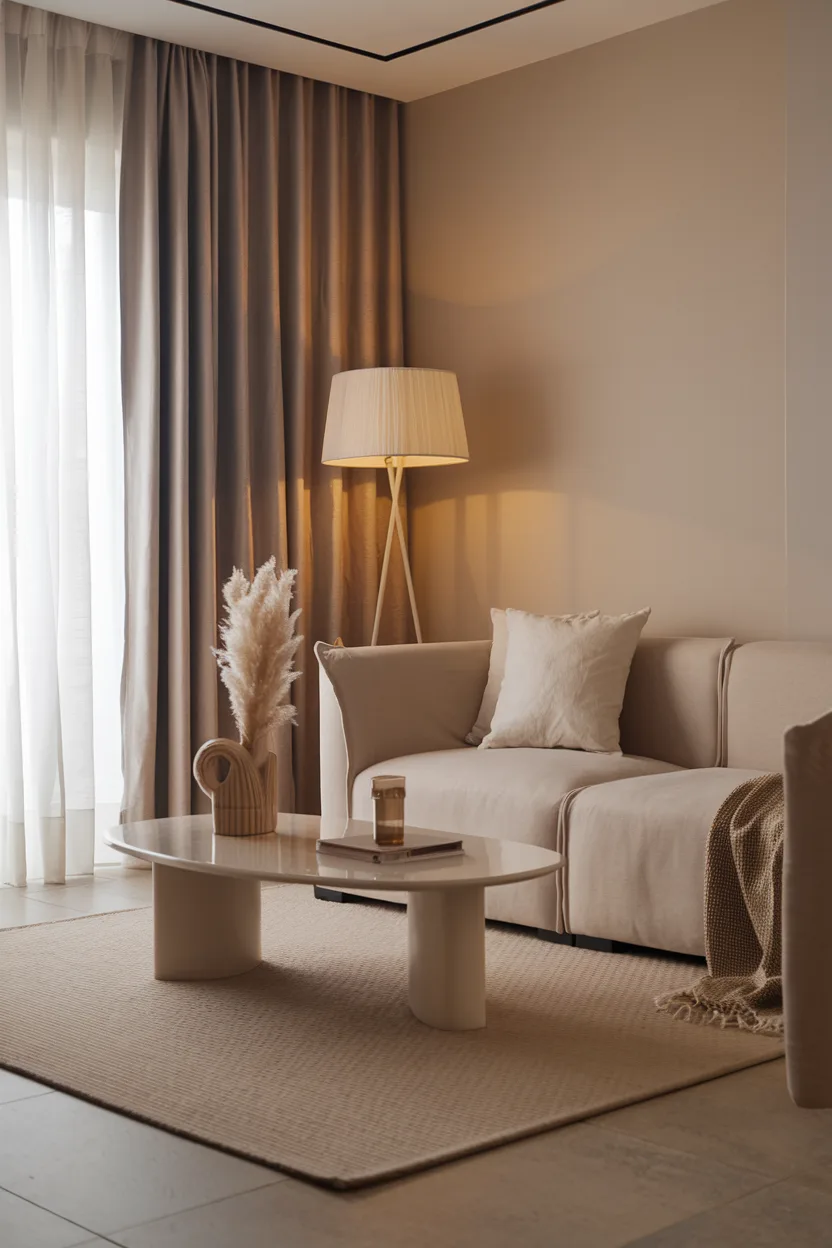
Corners are often overlooked but can be perfect for small furniture, like a corner shelf or an L-shaped desk. You can also use corner lighting to highlight the space and make it more functional.
Tips:
- Add a corner plant stand for greenery without using floor space.
- Use corner shelves to display lightweight decor items.
14. Hang Plants Instead of Using Pots
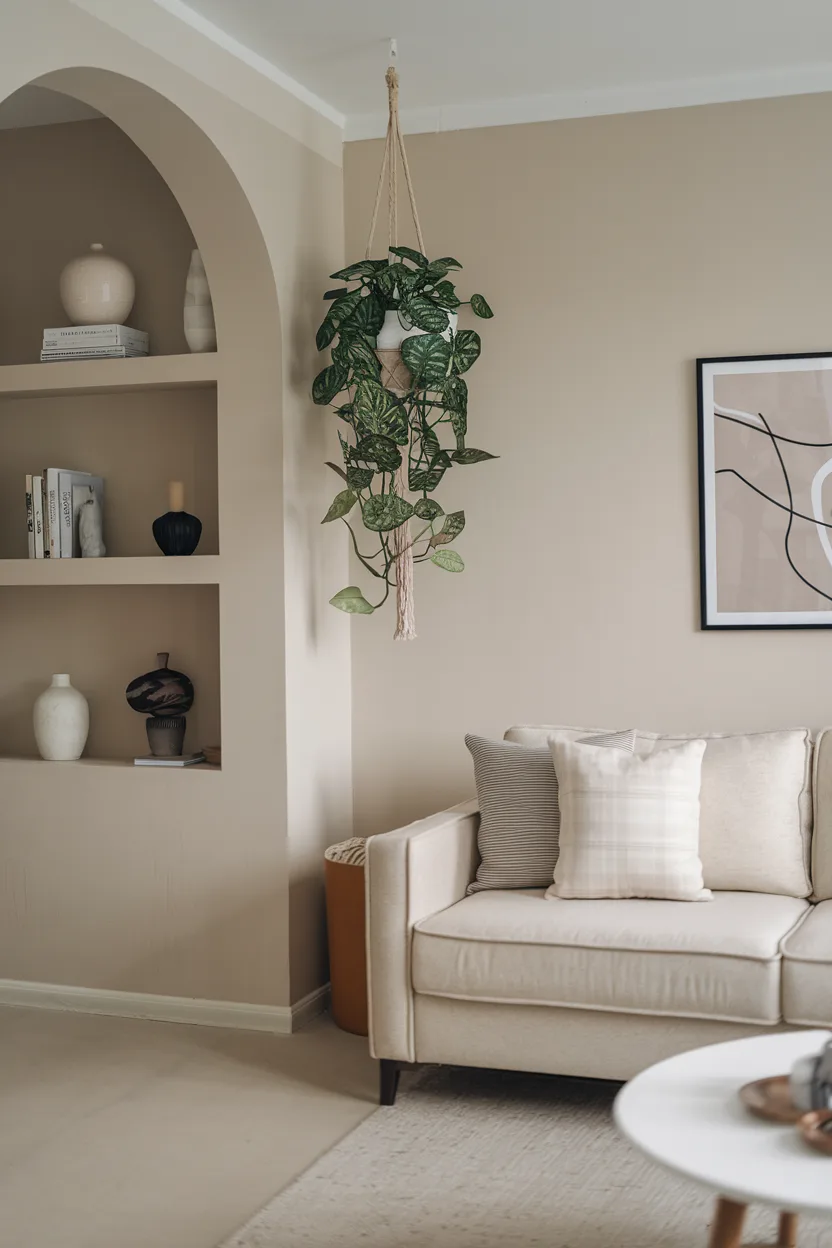
Plants can brighten up any space, but large pots take up floor space. Instead, hang plants from the ceiling or place smaller ones on shelves or windowsills.
Tips:
- Use macramé plant hangers for a bohemian touch.
- Choose low-maintenance plants like pothos or snake plants.
15. Use Bold Wallpaper on One Wall
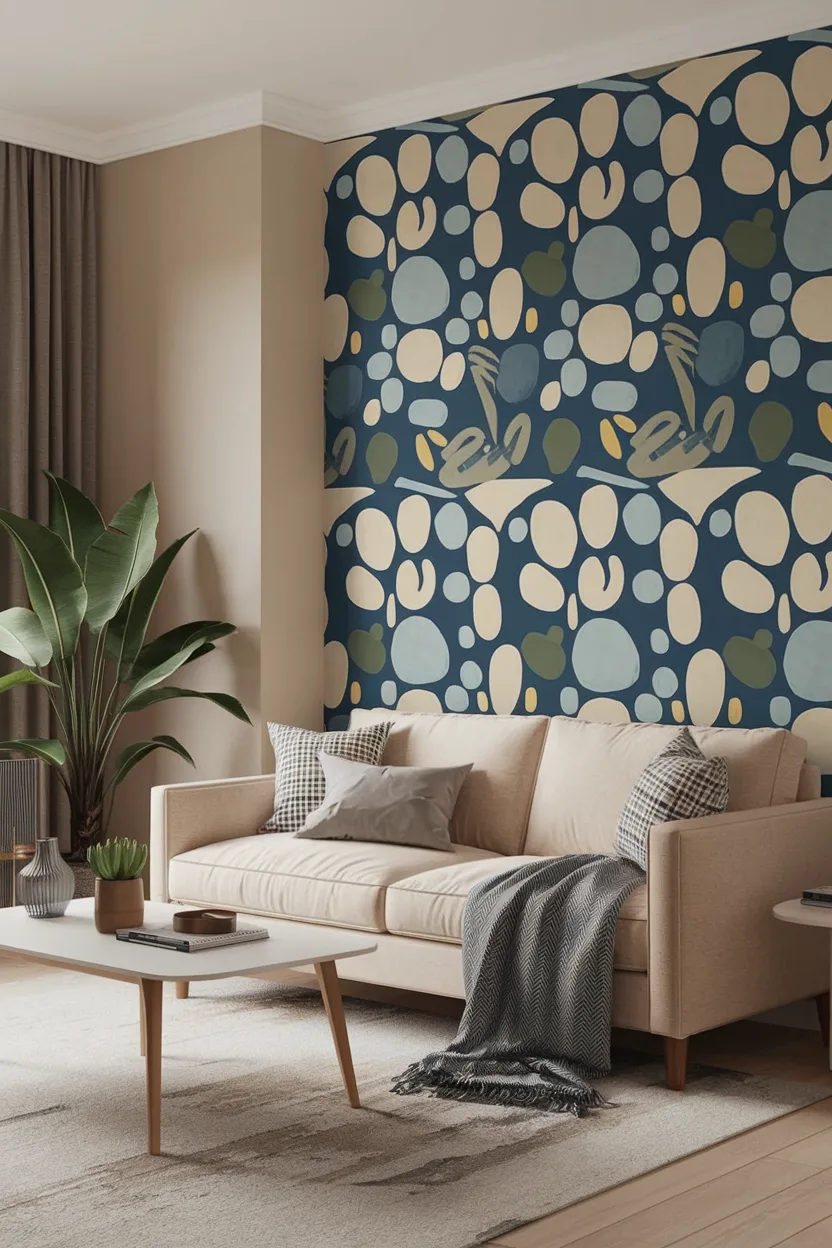
Create a focal point by adding bold wallpaper to one wall. This adds character and depth without overwhelming the space.
Tips:
- Choose patterns with vertical stripes to make the room feel taller.
- Match the wallpaper colors with your existing decor for harmony.
16. Use Color to Create a Spacious Look
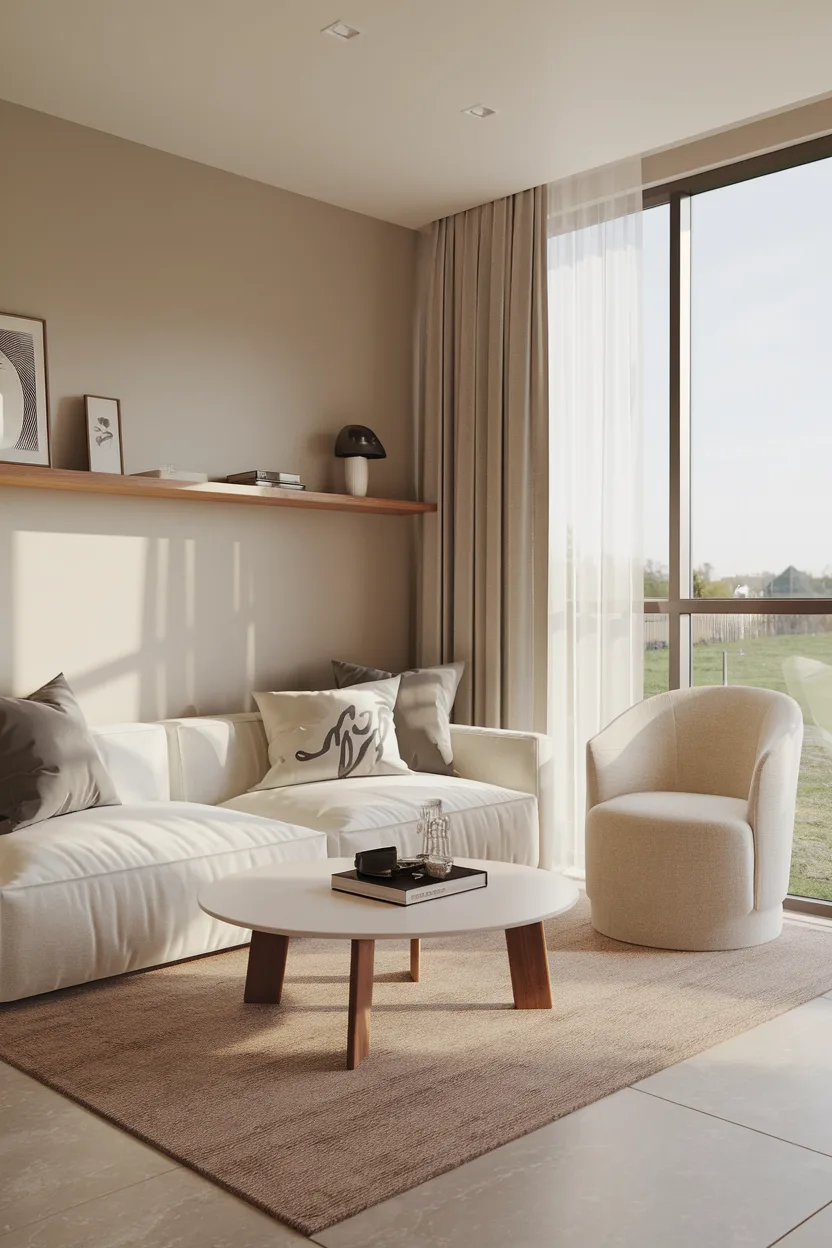
The right color scheme can make a small living room feel much larger. Light and neutral colors, along with specific accent hues, help create the illusion of space.
Tips:
- Paint walls in soft shades like white, beige, or light gray to reflect more light.
- Use a monochromatic color palette for furniture and decor to avoid visual fragmentation.
- Add pops of color through small accents like cushions or artwork to keep the room lively without overwhelming the space.
Additional Tips for Decorating Small Living Rooms
- Focus on Lighting: Use a mix of natural and artificial lighting to keep the room bright and inviting.
- Avoid Overcrowding: Stick to a few key decor pieces rather than cluttering the room with too many items.
- Test Furniture Layouts: Rearrange furniture to find the most functional layout. Sometimes, shifting pieces can make a big difference.
Additional Elements to Enhance Your Living Room
Color Psychology in Decor
Colors affect mood and perception. Cool tones like light blue or green can make a room feel more expansive and calming, while warm tones like beige or cream provide a cozy yet open feel.
Patterns and Textures
Use vertical stripes in curtains or rugs to create the illusion of height. Incorporate subtle textures like linen or cotton to add depth without creating visual clutter.
Accent Walls and Ceilings
Paint the ceiling a lighter shade than the walls to draw the eye upward. Alternatively, use a subtle pattern on one wall to make the space feel dynamic.
Lighting Color Temperature
Use warm white bulbs for a cozy feel or daylight bulbs to emphasize brightness. Combine natural and artificial light sources to highlight your decor.
Curtains and Upholstery Fabrics
Opt for lightweight, sheer curtains to let in maximum light. For upholstery, stick to solid colors or very small patterns to avoid overwhelming the space.
Flooring Choices
Light wood or pale tiles can make the room feel more open. Add a large area rug in a neutral color to anchor the space without making it feel heavy.
Mistakes to Avoid
- Avoid overly dark wall colors that absorb light.
- Stay away from oversized furniture that dominates the room.
- Don’t overcrowd walls with too many decor items.
Budget-Friendly Tips
- Use peel-and-stick wallpaper for easy and affordable transformations.
- Incorporate throw pillows or DIY art for pops of color.
FAQs About Small Living Room Decor
Q: How do I make my small living room feel bigger?
A: Use light colors, mirrors, and furniture with clean lines. Maximize vertical space with shelving and avoid clutter.
Q: What kind of furniture works best for small living rooms?
A: Multifunctional furniture like storage sofas, foldable tables, and wall-mounted desks are excellent choices.
Q: How can I decorate my small living room on a budget?
A: Repurpose furniture, shop secondhand, and DIY decor items. Small changes like adding plants or swapping throw pillows can have a big impact.
Q: Should I use dark colors in a small living room?
A: While light colors are generally better for small spaces, you can use dark colors sparingly as accents to create contrast and depth.
Your small living room doesn’t have to feel cramped or cluttered. With these practical and creative ideas, you can transform it into a functional and stylish space.
Looking to make the most of every square inch in your home? Don’t miss our guide to Small Bathroom Ideas: 15 Smart Ways to Make the Most of Your Space. From clever storage solutions to layout tips, it’s packed with practical advice to transform your bathroom into a functional and stylish retreat.
For expert tips on choosing the perfect color schemes for small spaces, visit Little Green. Their advice on using light, reflective tones and creative palettes will inspire you to make your small living room look bigger and brighter.
Please note: This post may contain affiliate links, meaning I may earn a small commission at no extra cost to you. Your support helps keep the content coming – thank you!












